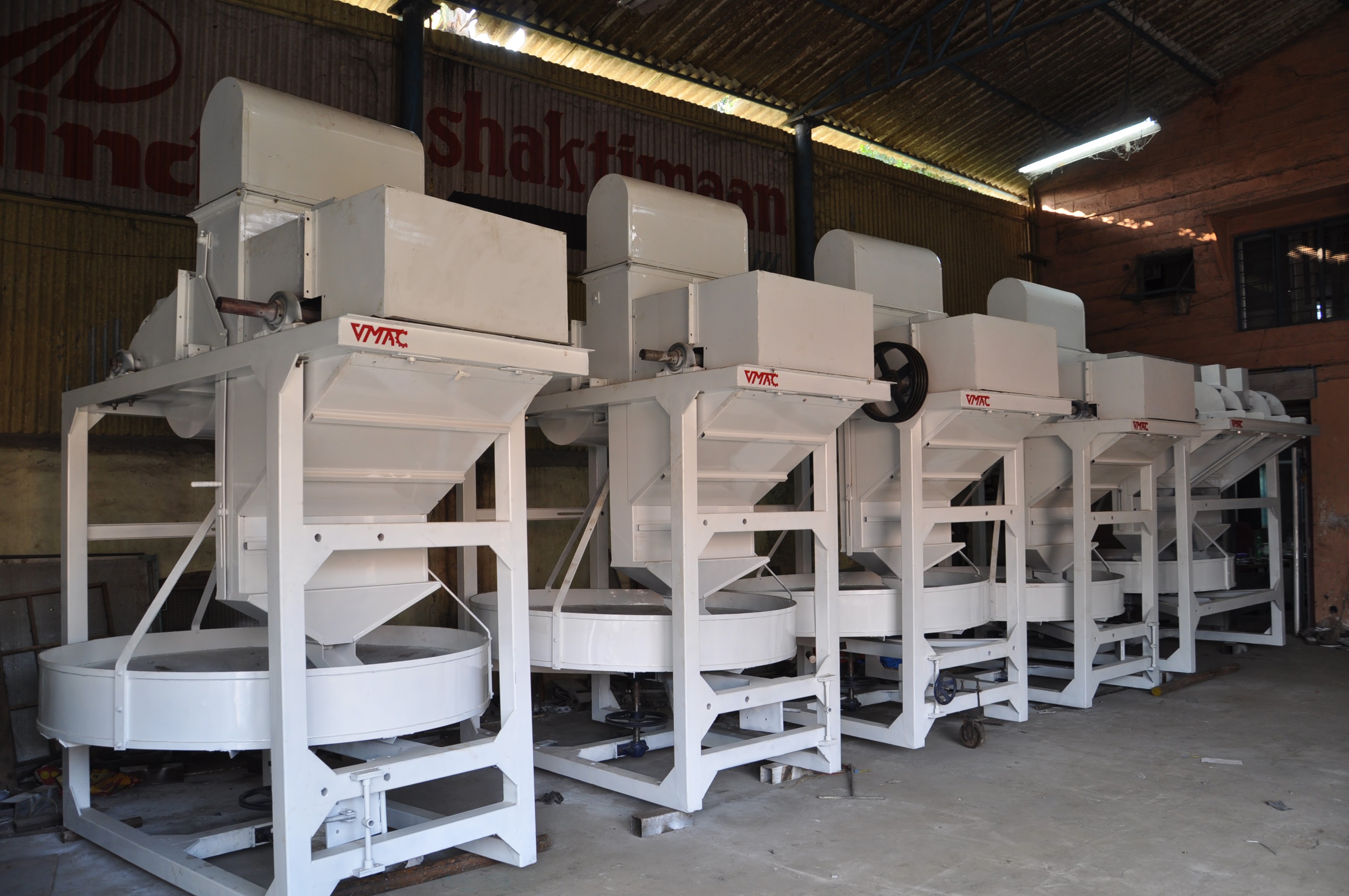
Production
Mastering Coffee Production
At Vmac Industries, we've mastered the balance between traditional craftsmanship and modern technology.
Discover how advanced destoning and gravity separation technologies can elevate your coffee quality by removing foreign materials and sorting beans for uniform excellence.
Purity is a hallmark of premium coffee production. Stones, debris, and defective beans not only pose a risk to equipment and consumer satisfaction but also diminish the value of your final product. Fortunately, modern machinery like destoners and gravity separators offers precise, efficient ways to remove unwanted materials and ensure your coffee beans meet rigorous quality standards. This guide explores how these technologies work, their benefits, and practical tips for integrating them into your coffee processing workflow.
Contaminants—like stones or sticks—can cause:
Equipment Damage
Foreign materials can jam, scrape, or break equipment components, halting production and incurring costly repairs.
Quality Defects
If defective or low-density beans remain in the batch, they can result in off-flavors and inconsistencies in the final cup.
Safety and Compliance
Stones or other hard objects in coffee can pose safety risks to consumers and violate quality regulations.
By ensuring a high degree of bean purity, you preserve machinery, elevate flavor consistency, and protect your brand’s reputation.
Destoners use airflow and vibration to separate heavier particles (like stones) from lighter materials (coffee beans). The basic steps include:
Feeding: Beans enter the destoner and spread over a vibrating deck or table.
Airflow: A controlled current of air lifts lighter beans upward, allowing them to move in one direction.
Separation: Heavier stones remain on the deck and are directed to a separate exit.
This process effectively eliminates most heavy debris, safeguarding downstream machines (hullers, grinders, or roasters) from potential damage.
Reduced Equipment Downtime: By extracting stones early, you prevent wear on critical components like Coffee Hullers or Coffee Grinders.
Improved Bean Consistency: Ensures only coffee beans move forward, eliminating variability caused by non-coffee materials.
Faster Throughput: Automated destoners operate continuously, minimizing manual sorting needs.
Deck Design: Check if the deck’s material and angle are adjustable to manage various bean densities and volumes.
Airflow Control: Machines with fine-tuned airflow settings handle different moisture levels or bean sizes.
Maintenance: Opt for quick-clean features like removable decks or easy-access panels to simplify routine upkeep.
Gravity separators sort beans based on weight and density. Commonly, a vibrating deck and air flow are employed:
Vibration: A shaking motion stratifies lighter and heavier beans.
Airflow: Adjusting airflow helps lift lighter beans, pushing them toward one part of the deck.
Separation: Heavier, high-quality beans settle at the lower end, while lighter or defective beans exit separately.
Enhanced Uniformity: Beans of similar density roast more consistently and yield uniform flavor profiles.
Higher Grade Output: By removing broken or hollow beans, you can command premium prices for your coffee.
Flexible Applications: Gravity separators accommodate multiple bean varieties and grades, from high-altitude Arabica to robust Robusta.
Adjustable Controls: Look for machines that let you fine-tune deck angle, vibration intensity, and airflow volume.
Capacity Matching: Ensure the separator’s throughput aligns with your daily or seasonal production needs.
Integration: Position the gravity separator logically after destoners, hullers, or other upstream equipment to achieve the smoothest workflow.
For best results, install destoners and gravity separators after pre-cleaners, which remove surface-level dust, husks, or large debris. This setup prevents minor contaminants from creating blockages or impeding the heavier-duty machines.
Typically, these purification steps come before final grading or packaging. For example:
Pre-Cleaner
Destoner
Huller (if removing parchment or husk)
Gravity Separator
Grader / Color Sorter
Packing & Storage
Consider using conveyor belts, bucket elevators, or pneumatic tubes to transport beans between stages. Such automation ensures continuous operation, maximizes throughput, and reduces manual bean handling.
Calibrate Regularly
Test and adjust airflow, vibration speed, and deck angles based on bean type, moisture content, or daily throughput.
Monitor Moisture Levels
Beans with higher moisture may behave differently during separation. Drying beans uniformly or adjusting machine settings avoids inconsistent results.
Routine Cleaning and Maintenance
Removing accumulated chaff, stones, or broken beans from machine decks and filters helps maintain performance and product quality.
Train Operators
Proper training ensures operators can quickly diagnose and correct minor issues—like deck imbalance or blocked airflow channels—minimizing downtime.
Destoners and gravity separators often yield swift returns through:
Fewer Machinery Repairs: Stones or dense debris can damage expensive components like rotors or impellers in roasters and grinders.
Higher Market Value: Clean, defect-free beans fetch premium prices, especially in specialty coffee circles.
Reduced Labor: Automated separation cuts the need for manual bean inspection, lowering payroll costs.
By quantifying these savings and revenue gains, you can build a compelling business case for investing in advanced purification machinery.
In the quest for higher coffee quality, destoners and gravity separators are indispensable. By strategically removing heavy debris, defective beans, and other contaminants, these machines protect downstream equipment, enhance bean consistency, and elevate the final cup profile. Whether you run a small-batch specialty operation or a large commercial plant, incorporating robust purification steps can greatly influence your reputation and bottom line.
Lastest blog posts